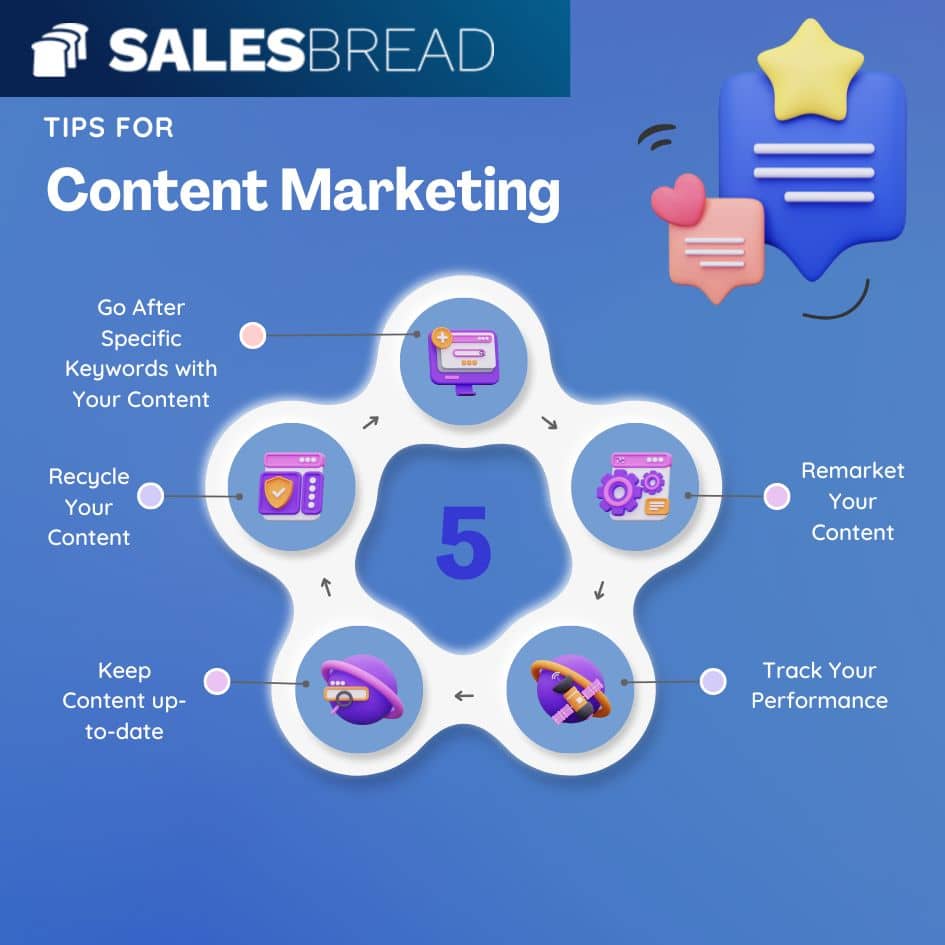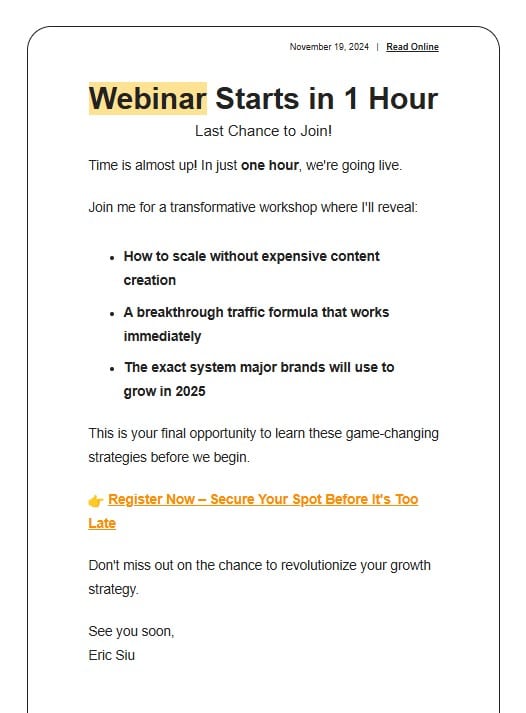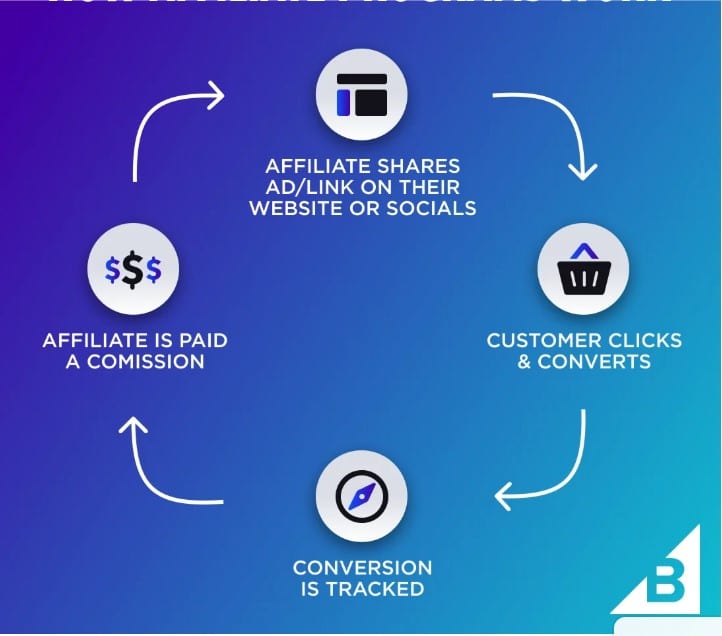In today’s digital age, lead generation is the lifeblood of any successful business. As we approach 2025, staying ahead of the curve with the latest channels and strategies is critical for capturing those all-important leads.
From tried-and-true methods like email marketing to the modern allure of social media, there are a myriad of ways to connect with your target audience.
So, how can you harness these channels to fuel your business’s growth and ensure you’re not left behind in this fast-paced environment?
Could it be that the secret to greater growth lies in lead generation channels that you haven’t fully explored yet?
In this article, we will consider the top 11 lead generation channels to use for 2025.
|
Channel |
ROI |
Average Cost/Month |
Time to See Results |
Specialized Companies |
|---|---|---|---|---|
|
LinkedIn Outreach
|
High (3x-8x)
|
$1,000-$5,000+
|
1-3 months
|
SalesBread, Cience, Revboss
|
|
SEO (Search Engine Optimization)
|
High (5x–10x over time)
|
$1,500–$10,000+
|
3–6 months
|
WebFX, Grow & Convert
|
|
PPC (Pay-Per-Click Ads)
|
Moderate to High (2x–5x)
|
$500–$10,000+ (depends on budget)
|
Immediate to 1 month
|
Outerbox, Loud Mouth Media
|
|
Social Media Marketing
|
Moderate (1.5x–4x)
|
$1,000–$5,000+
|
1–3 months
|
Hootsuite, Sprout Social, SocialBee
|
|
Content Marketing
|
High (5x–10x over time)
|
$3,000–$10,000+
|
6–12 months
|
Grow & Convert, Siege Media
|
|
Email Marketing
|
Very High (up to 40x for every $1 spent)
|
$300–$2,000+
|
Immediate to 1 month
|
NP Digital, Invisible Brands
|
|
Affiliate Marketing
|
Moderate (depends on commission)
|
Varies widely ($500–$5,000+)
|
2–6 months
|
HubSpot, ConvertKit, Shopify
|
|
Event Marketing (Webinars, Trade Shows)
|
Moderate to High (2x–5x)
|
$2,000–$10,000+ (per event)
|
1–3 months (for follow-up leads)
|
RMNG, Astound Group
|
|
Cold Outreach (Email/Calls)
|
Moderate (depends on execution)
|
$500–$3,000+
|
1–2 months
|
SalesBread, CallBox
|
|
Referral Programs
|
Very High (low cost per lead)
|
$0–$1,000+
|
1–3 months
|
|
|
Influencer Marketing
|
High (if niche-aligned)
|
$1,000–$50,000+
|
1–2 months
|
The Social Shepard, The Shelf, Upfluence
|
|
Podcasting
|
Moderate to High (3x–6x)
|
$500–$10,000+
|
3–6 months
|
Lower Street Media, Quill
|
1. LinkedIn Outreach

At Salesbread we specialise in LinkedIn outreach. This means that we will connect with your ideal buyers through Linkedin by sending them an ultra-personalized outreach message. (No sleazy sales pitches.)
Here’s how we do it:
Step 1: Ultra refined list building
We start by creating a highly specific list of prospects based on who is buying from you. By analyzing this data we will find patterns and create look-a-like lists to go after. Our outreach focuses only on well-qualified leads, which increases conversion rates.
For more detail on how we do this, read this article: B2B List Building – How to Build an Ultra-Refined List
Step 2. Personalized Messaging with the CCQ Method:
We then use the “CCQ” framework—Compliments, Commonalities, and Questions—to craft highly personalized LinkedIn messages.
We will actually conduct deep research on each prospect, often going beyond LinkedIn to find unique information. This tailored approach makes messages stand out amid generic sales pitches and significantly improves engagement rates.
Here are some examples:
1. Hey {{Name}}, since we’re both working in {{commercial real estate}} here in {{San Diego}}, I’d like to invite you to share my network here on LI.
2. {{Name}}, I’m looking to connect with like-minded professionals who are on the {{revenue-generating}} side of things. Let’s connect?
3. Hi {{Name}}, I’m looking to expand my network with fellow business owners in the {{HR Tech}} industry. Looking forward to learning more about what you do and see if there’s any way we can support each other.
4. Hi {{Name}} LinkedIn showed me your profile multiple times now, so I checked what you do. I really like your {{sales posts}} and would like to connect with you here.
5. Hey {{Name}} I hope your week is off to a great start, since we both work in the {{HR/Employee Experience}} field together, are you open to connecting? {{My background is in employee retention, happy to share insights anytime.}}
6. Listening to your podcast now & subscribed! Wanted to connect and say thank you for sharing your insights – I’m using them to help land a lead gen job. Cheers,{{Signature}}
Step 3. Consistent Follow-Ups with a clear CTA
Follow-up messages are sent using the Fibonacci sequence. We follow up consistently and add even more personalization to our follow-up messages.
These messages are designed to gently nudge the prospect without coming across as pushy. We use value-driven insights or specific questions to maintain relevance and always ask for a booked sales call.
We keep our ask simple, though.
Here are some examples:
- How does your calendar look in the next week?
- Can I schedule a quick call to discuss this?
- Is this something on your radar?
- Send me your calendar link and I will book a slot.
What are the results?
Since 2019, SalesBread clients have averaged a 19.98% reply rate with our ultra-personalized LinkedIn Lead Generation Services.
And… 48.14% of those replies were either meeting requests or qualified sales inquiries on their product or service.
If you haven’t tried LinkedIn outreach yet as a lead generation channel, you missing out on finding qualified sales leads. Our clients know that they can expect 1 qualified sales lead per day.
Feel free to hop on a free 15-minute strategy session with us to see how to do it.
2. Social Media Marketing

Social media has become an indispensable tool for all modern marketers. With billions of users worldwide, platforms like Facebook, Instagram, Twitter, and LinkedIn offer a huge pool of opportunities for finding potential leads.
But simply having a presence on these platforms isn’t enough.
You need to actively engage with your audience to convert followers into leads.
Utilizing platforms like Facebook, Instagram, Twitter, and LinkedIn for lead generation
Social media platforms connect you directly with your target audience, offering a unique opportunity to engage with them in meaningful ways.
By crafting engaging content tailored to your audience’s interests, you capture potential leads’ attention.
This content can range from informative posts and eye-catching visuals to interactive stories and live videos that encourage participation.
Consistent posting not only builds brand awareness but also fosters trust, making prospects more likely to consider your offerings.
Interactive features like polls and live videos are an especially great way to boost engagement because they invite your audience to participate and interact with your brand directly.

This interaction can help you better understand your audience’s needs and preferences, allowing you to tailor your approach to generate leads effectively.
Additionally, you can also invest in some social media advertising and influencer marketing. With social media advertising, you can become quite granular with whom you target.
Below is an example of the different filters you can use for advertising on Instagram and Facebook.


This can amplify your reach, ensuring your message gets in front of the right people. These strategies can be particularly effective when targeting specific demographics or industries.
3. Email Marketing

Email marketing remains a pretty reliable channel for generating leads and nurturing relationships. It’s a direct line to your prospects, allowing you to deliver personalized messages right to their inbox. When used correctly, email marketing can be a great tool for your lead generation efforts.
Use targeted email campaigns
Targeted email campaigns reach prospects with messages that speak directly to their needs and interests. By segmenting your audience based on demographics, behaviors, or engagement levels, you can ensure your messages resonate with each recipient.
Crafting compelling subject lines will also ensure that your emails get opened and read.
Once you’ve captured their attention, engaging content and clear calls to action can guide your subscribers through the sales funnel.
Automated email sequences are another way to keep your brand in the minds of your prospects, allowing you to nurture leads over time.
By setting up a series of emails that trigger based on specific actions or time intervals, can gradually move prospects closer to conversion.
Analyzing email metrics like open rates, click-through rates, and conversion rates will help you refine your strategies and achieve better results over time.
Use personalization
Personalization is also incredibly important if you want more sales.
It’s the key to creating meaningful connections with your audience.
By tailoring your emails to individual subscribers, you can boost engagement, build loyalty, and ultimately drive more conversions. Let’s explore how to use personalization effectively, step by step.
The first step is gathering and using customer data wisely. Think about it: the more you know about your audience, the better you can serve them.
This means collecting information like demographics (age, location, gender), behavioral data (browsing history, past purchases, email interactions), and personal preferences.
Whether you obtain these insights from surveys or simply track intent data, having a rich pool of data allows you to create emails that resonate.
Once you have the data, segmentation is your next move. Not all subscribers are the same, so dividing your audience into groups makes personalization more precise.
You can segment by location to send localized offers, target users based on their behavior (like those who left items in their cart), or tailor content according to lifecycle stages, such as new subscribers, loyal customers, or those who’ve gone quiet.
When it comes to the content of your emails, personalization is all about the details.
Start with the subject line—mentioning the recipient’s name or referencing their recent activity can work wonders.
For instance, “Jane, your favorite sneakers are back in stock!” is far more engaging than a generic “Check out our new arrivals.”
Behavioral triggers are another game-changer. Automation tools can help you send emails at just the right time, based on user actions.
For example, you can greet new subscribers with a warm welcome email, remind customers about items left in their cart, or follow up post-purchase with recommendations for complementary products. These timely emails show customers you’re paying attention and care about their experience.
Finally, don’t underestimate the power of authenticity. Make your emails feel like a conversation rather than a marketing pitch.
Use a friendly tone, include sender details to make it personal, and be transparent about how you use customer data.
By weaving personalization into your email marketing strategy, you’re not just sending messages—you’re building relationships. With tools like Mailchimp, Klaviyo, or HubSpot, you can make personalization seamless and impactful.
Remember, it’s about making each subscriber feel seen, valued, and excited to engage with your brand.
4. Search Engine Optimization

Search Engine Optimization (SEO) is a digital marketing technique that can bring about a good ROI if done the right way.
SEO helps businesses attract organic leads through search engines.
By optimizing your website’s content and structure, you can improve its visibility and appeal to both search engines and users alike.
Optimizing website content & structure
Quality content optimized for search engines is key to attracting organic traffic.
You can do this by conducting strategic keyword research, or intent-based keywords.

Think about which terms and phrases your target audience is searching for and incorporate them naturally into your website’s content.
You can use tools like Moz, Ahrefs, or SE Ranking to see how much traffic a certain keyword receives and see how hard it would be to rank for a specific keyword.
This improves your website’s search engine ranking, making it easier for potential leads to find you.
Most users don’t scroll past page 1 of Google, so if you can create helpful content that ranks on page 1, the chances of your ideal customers finding you will be much higher; Besides this, if you can write conversion based content, more leads will be inclined to contact you.
A well-structured website enhances user experience, encouraging visitors to stay longer and explore your offerings. This can involve optimizing page load times, ensuring mobile-friendliness, and creating clear navigation paths.
Regular SEO audits will help you stay ahead of your competition.
By keeping your site updated and relevant, you’ll maintain and even improve your ranking, ensuring a steady stream of organic leads.
5. PPC Advertising

(Image courtesy of HubSpot)
Pay-per-click (PPC) advertising offers a quick way to generate leads by placing your ads in front of your target audience.
Unlike organic methods, PPC campaigns provide immediate visibility and can be tailored to reach specific demographics.
Run targeted pay-per-click campaigns
PPC campaigns provide immediate visibility on search engines, putting your brand in front of potential leads right when they’re searching for products or services like yours.
You can target specific keywords and demographics, which can maximize your lead potential and ensure your ads reach the right people.
Using A/B testing, you can also refine your ad copy and design to improve performance and conversion rates.
It’s also important to monitor and adjust bids so that PPC remains cost-effective. It’s important to set a budget because if not, it can become costly.
According to HawkSEM, clients invest on average between $1,500 to $10,000 a month on PPC management. The return on investment is 4.5 x if done correctly.
6. Content Marketing

Content marketing is all about creating valuable and engaging content that attracts leads and builds your brand’s credibility.
If readers can see that you are an industry authority, you can draw in prospects and nurture them through the buyer’s journey.
Create valuable and engaging content to attract leads and build brand credibility
High-quality content shows clients that you know what you’re talking about. By being a leader in your field, prospects will be drawn to your content especially if they are seeking solutions to their pain points.
By creating content in various formats, such as:
- Blog posts
- Videos
- Infographics
- And podcasts…
You can engage different audience segments and keep them coming back for more. Consistent content publication increases your website traffic and creates more opportunities for lead generation.
Sharing your content across multiple channels, including social media, email newsletters, and industry forums, amplifies your reach and engagement.
By focusing on creating content that addresses your audience’s pain points and questions, you can build trust and guide them toward conversion.
7. Webinars & Events

Webinars and events are also great ways of attracting leads and showcasing your expertise. Webinars can provide an educational and interactive platform for your audience, which in turn will help you build personal connections with your prospects.
In-person events can also help you find more leads. Oftentimes, trade shows attract people who are actively searching for your product or service.
Host online webinars and in-person events
Webinars offer a convenient way to connect with potential leads from anywhere in the world.
By delivering valuable content and insights, you can demonstrate your expertise and build trust with your audience.
Many webinar hosts, engage with attendees through Q&A sessions and interactive polls. This encourages participation, and for your audience to ask any questions they might have.
If they can see you as an industry expert, the chances of reaching out to you will be greater.
In-person events, on the other hand, allow you to build personal connections with prospects. These face-to-face interactions can leave a lasting impression.
Be sure to follow up after the event. This will ensure that you nurture captured leads and hopefully, this will move hem closer to a sale.
8. Affiliate Marketing

Image courtesy of BigCommerce
Affiliate marketing involves partnering with affiliates to promote your products or services. By tapping into their established audiences, you can expand your reach and increase lead potential.
Partner up with affiliates to promote your products or services
Affiliates expand your reach by promoting your offerings to their audiences, providing you with access to potential leads you might not have reached otherwise.
Performance-based incentives motivate affiliates to generate quality leads.
Cross-promotions with affiliates can increase brand visibility and lead potential. By choosing affiliates whose audiences align with your target market, you can achieve better results and drive more leads to your business.
For more detailed information on how to get started with affiliate lead generation, read this article: Affiliate Marketing 101: What it is and How to Get Started
9. Direct Mail

At Salesbread we take on direct email outreach in a very similar way to Linkedin outreach.
So, before you attempt to use email as a lead generation channel, be sure that you have an ultra-refined list of prospects.
Here are some key tips for effective cold email outreach.
Prioritize personalization:
Personalization is critical for improving open and reply rates. Customize at least 20-50% of your email, focusing on elements like the recipient’s name, company, or a specific interest or achievement. A well-crafted, personalized intro sentence can significantly boost engagement.
Use our C-C-Q formula:
– Commonalities: Highlight shared connections or interests to build rapport.
– Compliments: Start with a genuine compliment to grab attention.
– Questions: Pose relevant and specific questions to encourage interaction.
Write engaging subject lines:
Keep subject lines concise, relevant, and devoid of spammy language. Avoid overused phrases like “Quick Question,” and instead opt for simple, personalized alternatives.
Include a clear CTA:
Your call to action should be straightforward and low-commitment, such as scheduling a quick call. Avoid overwhelming asks like lengthy webinars or sales calls.
Optimize for deliverability:
Use email warm-up tools, such as Quickmail, to establish a positive sender reputation, ensuring your messages land in the inbox instead of spam. Regularly verify email addresses to avoid high bounce rates.
Follow up consistently:
Use the Fibonacci sequence (e.g., 1, 2, 3, 5 days) to balance persistence without overwhelming prospects.
Test and refine:
Lastly, conduct A/B tests on different email elements, such as subject lines, intros, and CTAs, to figure out what resonates most with your audience.
Tracking response rates is critical for measuring the effectiveness of your campaigns and making necessary adjustments. While digital channels dominate the marketing landscape, direct mail adds a personal touch that can differentiate your brand and generate qualified leads.
10. Podcasting
Podcasting is also a marketing channel that can expand your reach. By sharing valuable insights, interviewing industry experts, or discussing topics your target audience cares about, you build trust and rapport with listeners.
Plus, you can use podcasts to promote gated content, like downloadable guides or exclusive webinars, directing listeners to your website where they can sign up for more resources.
The key is consistency, providing real value, and using calls to action naturally in episodes without sounding overly promotional.
Check out podcast here.
11. Influencer marketing

Influencer marketing works by partnering with social media influencers who have a dedicated and engaged audience to promote your products or services.

These influencers, ranging from mega-celebrities to niche micro-influencers, share content that highlights your brand, leveraging their credibility to drive awareness and conversions.
The cost of influencer campaigns varies widely, with nano-influencers (1K-10K followers) charging around $10-$100 per post, while top-tier influencers with millions of followers may charge $10,000 or more per post.
To get started, identify influencers who align with your brand values and target audience, then reach out with a clear proposal.
Tools like Upfluence, Aspire, or Influencer.co can help you with this process, from finding influencers to managing campaigns. Keep your focus on authenticity and metrics like engagement rates to ensure ROI.
Frequently Asked Questions
What are the channels for lead generation?
There are various channels for lead generation, including social media platforms like Facebook and LinkedIn, email marketing, content marketing, search engine optimization (SEO), pay-per-click (PPC) advertising, influencer marketing, and more.
What is the best channel for generating quality leads?
The best channel for generating quality leads depends on your target audience and industry. However, many businesses find success with a combination of channels, such as content marketing and SEO, as they provide valuable information to potential customers and drive organic traffic to their websites.
What are the pay-per-lead channels?
Pay-per-lead channels are platforms where businesses only pay for qualified leads generated through their campaigns. Examples include affiliate marketing programs, lead generation services, and sponsored content partnerships.
What is a lead channel?
A lead channel is a marketing channel or platform used to attract, engage, and convert potential customers into leads. It is essential for businesses to identify the most effective lead channels for their target audience to maximize their marketing efforts and generate quality leads.
Conclusion
Obviously, there are many more lead generation channels to consider, but these are some of the best-performing ones with the top ROI.
Which of these channels will you explore to take your lead generation efforts to the next level?
If you’re interested in seeing how LinkedIn lead generation can help your company, reach out to us for a free 15-minute strategy session. Our clients know they can expect 1 qualified sales lead per day.
